Imagine transforming your living space into a cascading oasis of greenery with the help of hanging baskets, a simple yet stunning way to bring the garden indoors. Whether you’re a beginner dipping your toes into the world of gardening or a seasoned green thumb seeking fresh inspiration, our guide to the “Best Plants for Hanging Baskets” is your ticket to creating vibrant, living art that hangs gracefully from above.
This thoughtfully curated list of plants offers something for everyone, capturing the beauty and ease of indoor gardening. You’ll discover plants that promise not only to beautify your home but also to thrive with minimal fuss, making them perfect companions for every gardener’s lifestyle. With these selections, you’ll gain practical insights into plant care and arrangement that will boost your confidence and ensure your efforts are met with success. Get ready to nurture your passion for gardening and enjoy the rewards of a lush, inviting home that reflects your love for all things green.
Trailing Lobelia (Vibrant Blue Blooms)
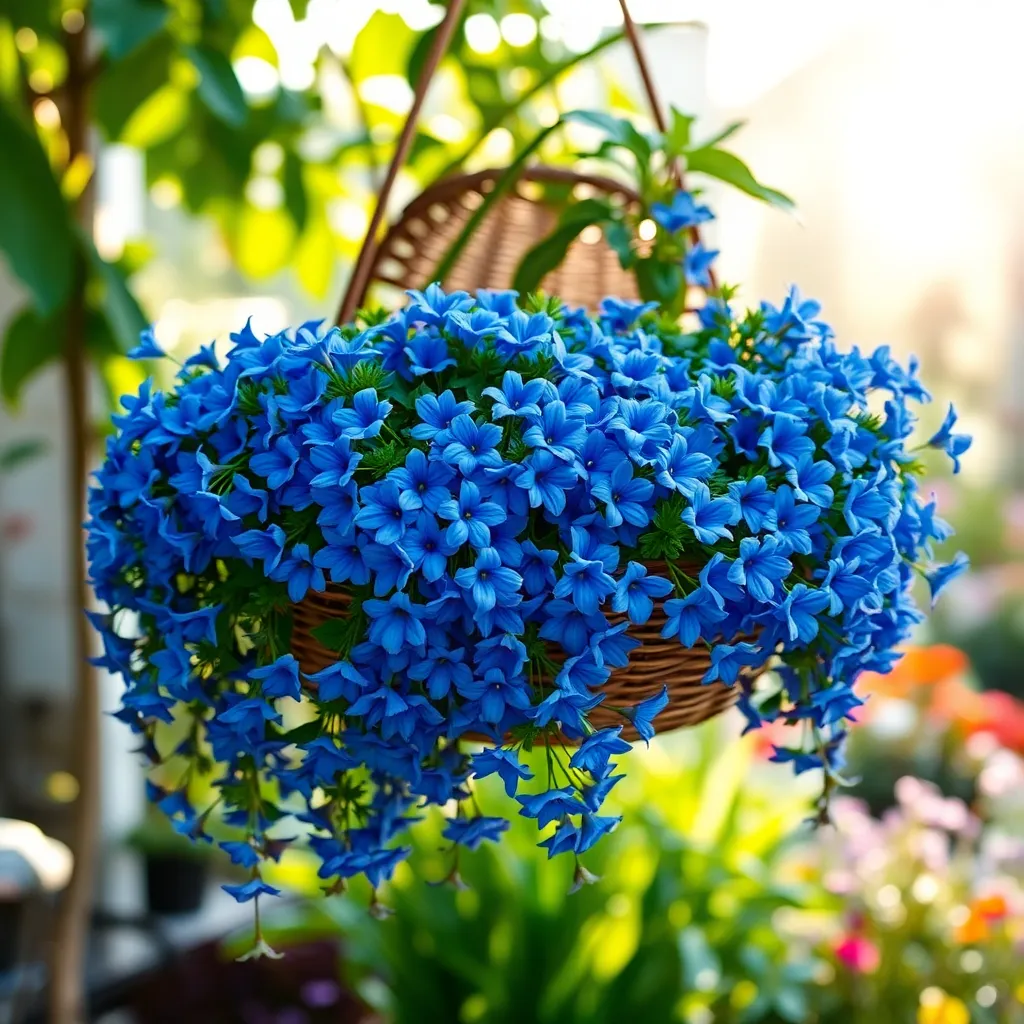
Trailing Lobelia, known for its vibrant blue blooms, is an excellent choice for hanging baskets, adding a cascade of color to any garden space. These plants thrive in cooler temperatures and are perfect for spring and fall displays.
To achieve the best growth, plant Lobelia in a well-draining potting mix rich in organic matter. Ensure your hanging basket is positioned in a spot that receives partial sunlight, as too much heat can stress the plant.
Water Lobelia regularly to keep the soil moist, but be cautious not to overwater, as this can lead to root rot. A layer of mulch on top of the soil can help retain moisture, especially during warmer days.
For continuous blooming, it’s essential to deadhead spent flowers regularly, which encourages new growth. Advanced gardeners might consider adding a balanced, water-soluble fertilizer every four to six weeks to boost the plant’s vigor and flowering potential.
Sweet Alyssum (Fragrant Carpet of Flowers)
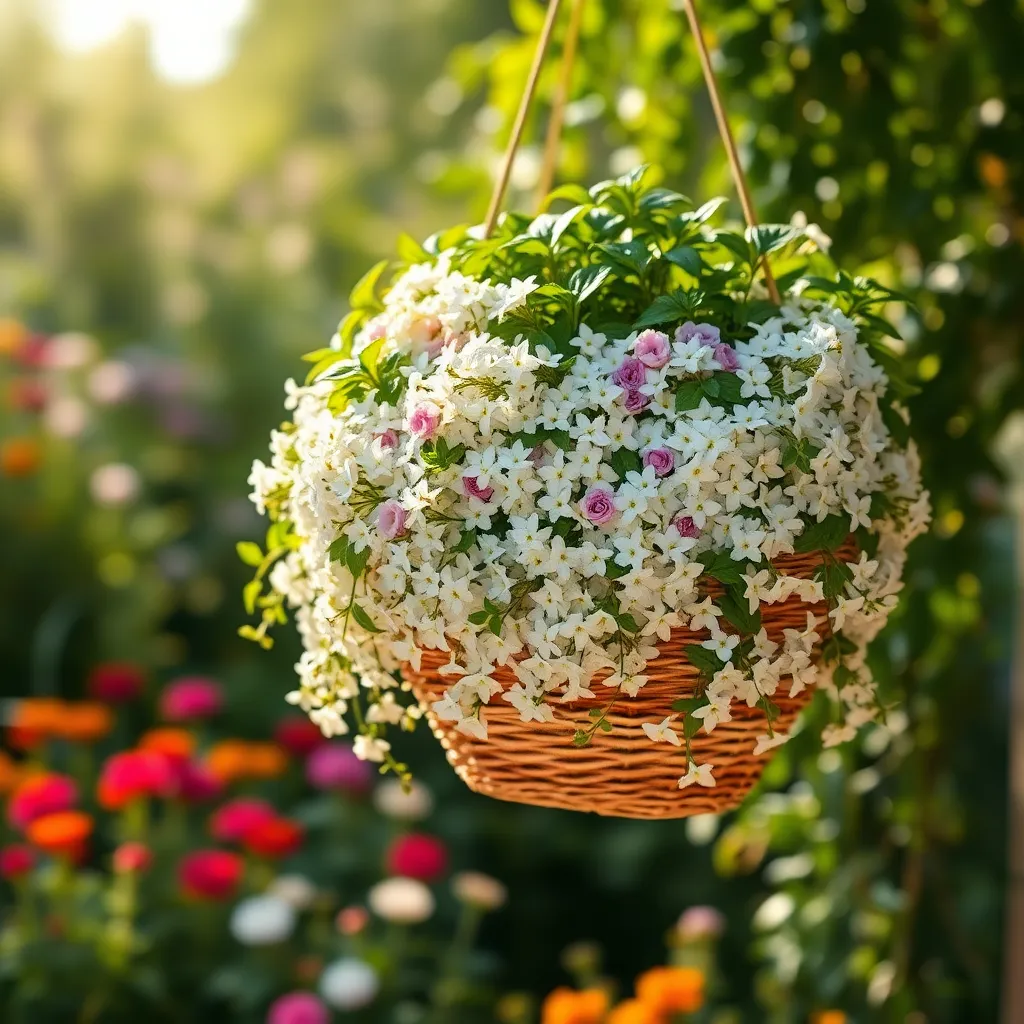
Sweet Alyssum is a delightful choice for hanging baskets, offering a fragrant carpet of flowers that can enhance any garden space. This plant thrives in full sun to partial shade, making it versatile for various locations around your home.
Plant your Sweet Alyssum in well-draining soil, such as a mix of potting soil and sand, to ensure healthy growth. Water regularly but avoid overwatering; the soil should be moist but not soggy.
For those living in warmer climates, consider positioning your hanging basket where it receives morning sun and afternoon shade to prevent wilting. Fertilize every four to six weeks with a balanced, water-soluble fertilizer to encourage continuous blooming.
Beginner gardeners will appreciate Sweet Alyssum’s low maintenance, while more experienced gardeners can explore companion planting with herbs like thyme or basil. This plant is also attractive to pollinators, making it a great addition to any eco-friendly garden setup.
Compact Fuchsia Varieties (Shade-Loving Elegance)
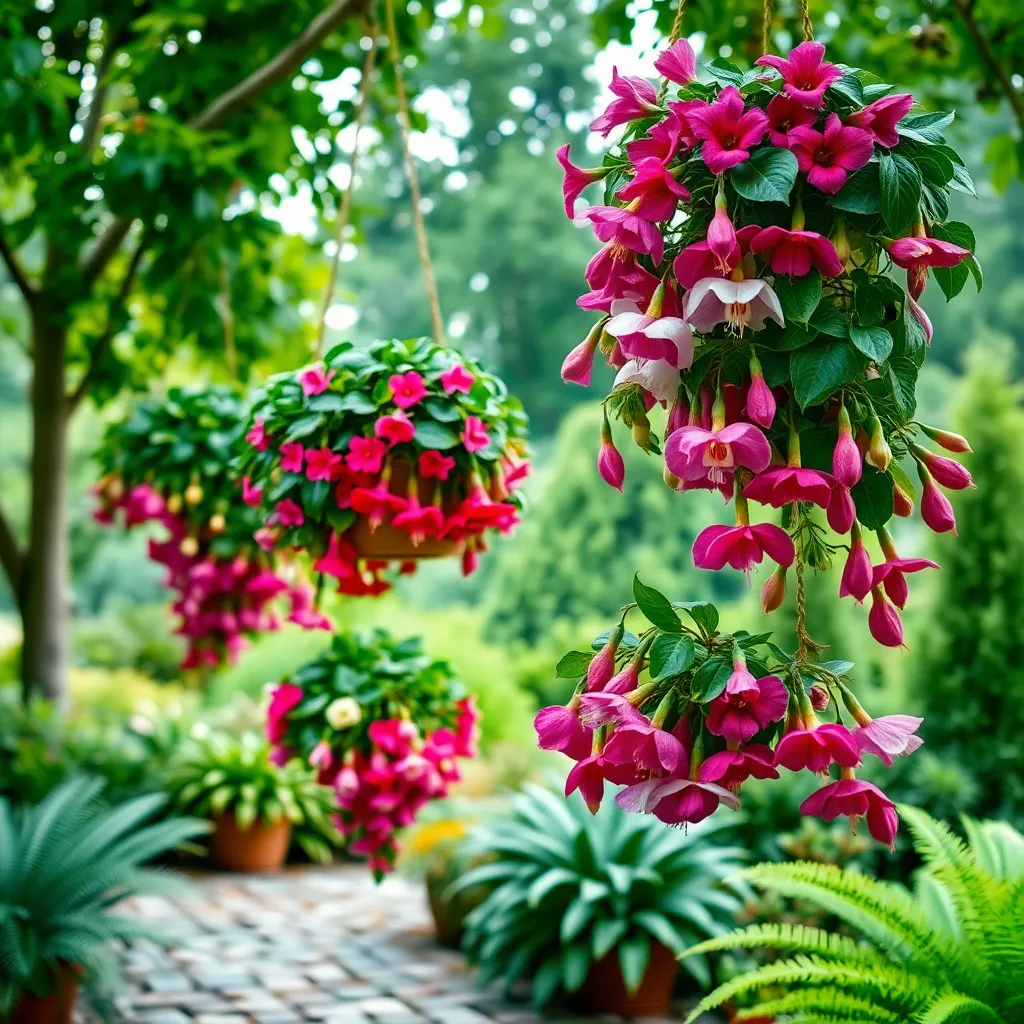
Compact fuchsia varieties bring a touch of elegance to shaded areas, making them perfect for hanging baskets. These plants thrive best in indirect light, where they can enjoy the warmth without the harsh rays of the sun.
To keep your fuchsias vibrant, ensure they are planted in well-draining soil rich in organic matter. A potting mix with added perlite or coarse sand will help maintain the necessary drainage and aeration for optimal growth.
Watering is crucial for fuchsias, as they prefer consistently moist soil. However, avoid overwatering, which can lead to root rot; aim to water when the top inch of soil feels dry.
For those looking to promote continuous blooms, regular feeding is essential. Use a water-soluble fertilizer every two weeks during the growing season to encourage lush foliage and abundant flowers.
Pruning is another important aspect of fuchsia care, as it helps maintain their compact shape and encourages new growth. Trim back leggy stems in early spring, ensuring to cut just above a pair of leaves for the best results.
Self-Watering Hanging Baskets (Consistent Moisture Control)
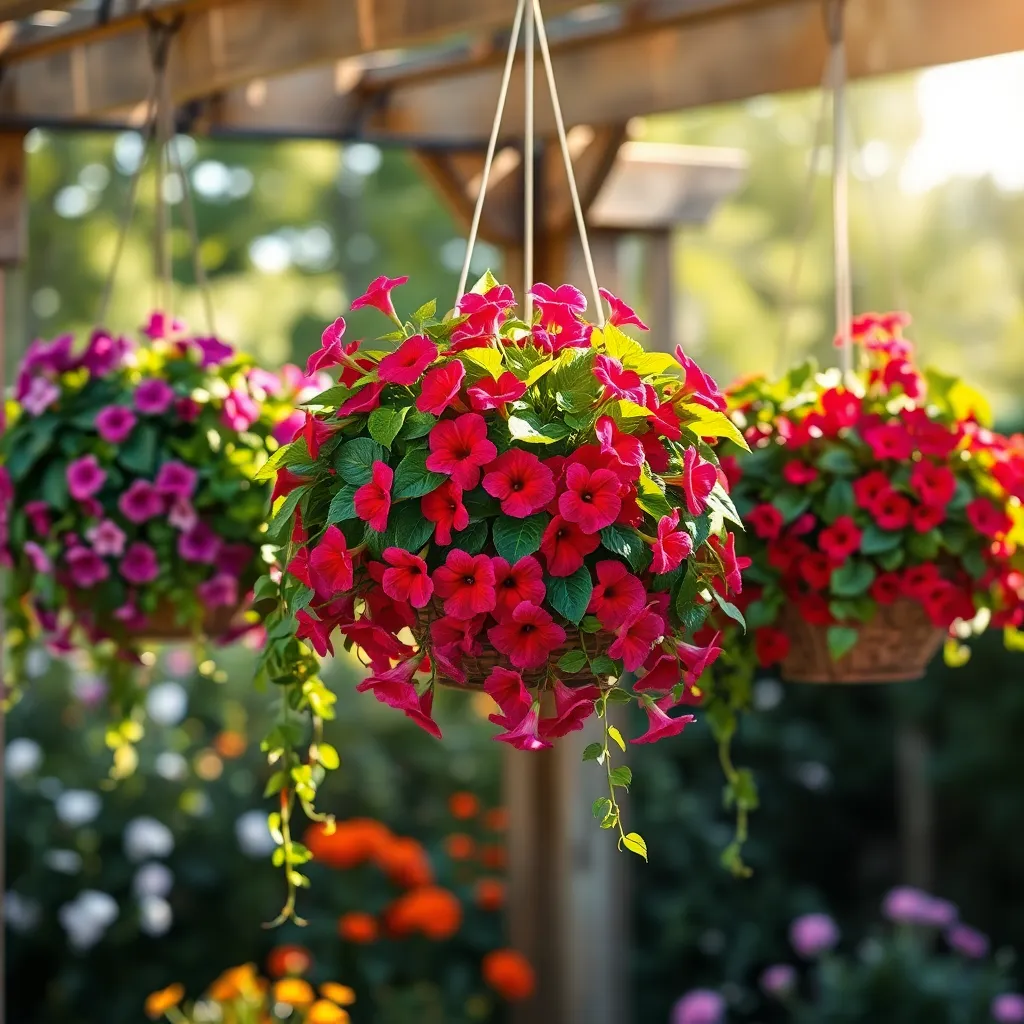
Self-watering hanging baskets are an excellent choice for gardeners looking to maintain consistent moisture levels for their plants. These baskets are designed with a reservoir at the bottom, allowing plants to draw water as needed, which helps avoid both overwatering and underwatering.
For optimal use, fill the reservoir completely and check it every few days to ensure it hasn’t run dry, especially during hot weather. It’s crucial to use a well-draining potting mix that retains moisture while allowing excess water to flow through, such as a blend containing peat moss and vermiculite.
Plant selection is key when using self-watering baskets; opt for species that thrive in consistently moist soil. Plants like impatiens, begonias, or even trailing plants like sweet potato vines are excellent choices as they flourish in these conditions.
To enhance the efficiency of your self-watering system, consider adding a layer of mulch on top of the soil to reduce evaporation. This simple step can significantly decrease the frequency of refilling the reservoir, making maintenance easier.
Creeping Jenny (Golden Foliage for Contrast)
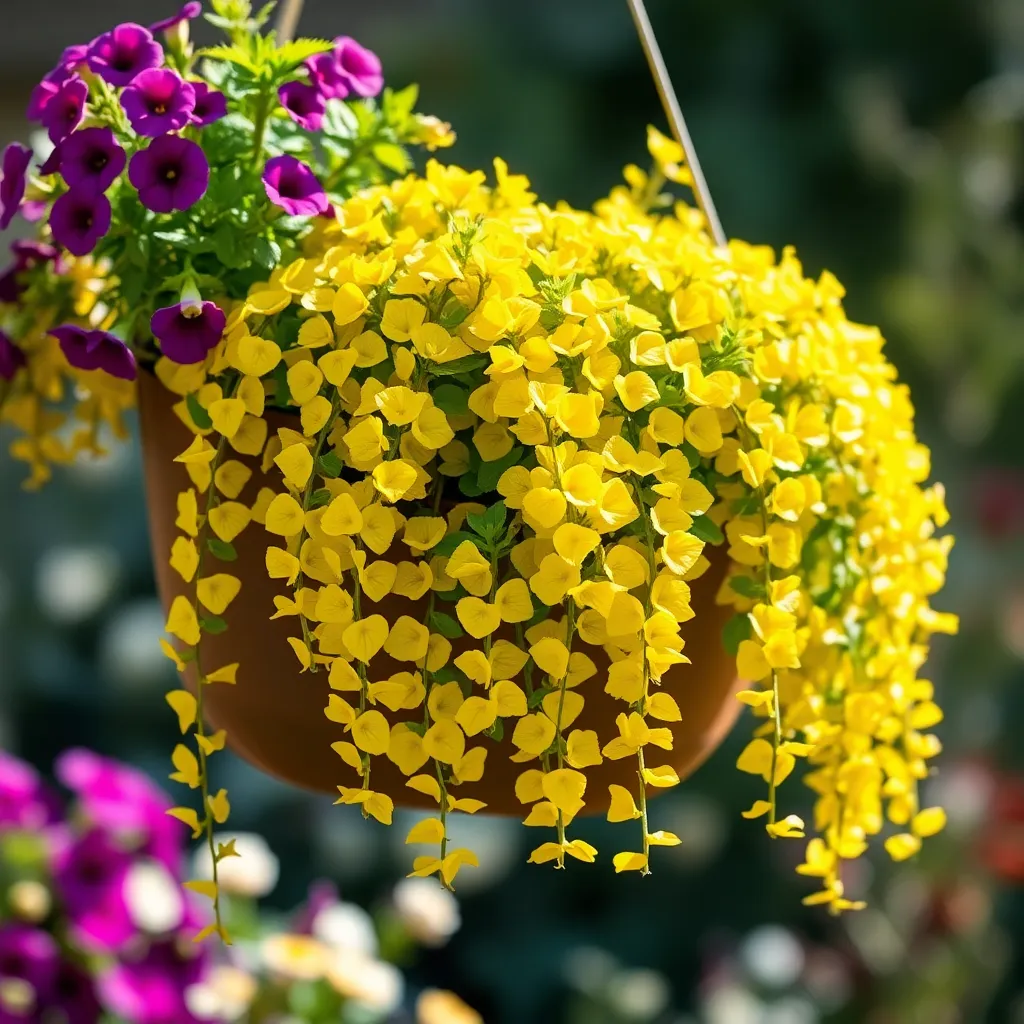
Creeping Jenny, known for its vibrant golden foliage, is a fantastic choice for adding contrast to your hanging baskets. This hardy perennial thrives in USDA zones 3-9, making it a versatile option for many gardeners.
To keep Creeping Jenny looking its best, ensure it receives full sun to partial shade. Although it can tolerate some drought, this plant prefers consistently moist soil, so regular watering is crucial.
For optimal growth, use a well-draining potting mix enriched with organic matter. Consider adding perlite to improve drainage and avoid soggy conditions that may cause root rot.
Incorporate Creeping Jenny into your hanging baskets to create a lush, trailing effect. Pair it with other plants that have contrasting foliage colors or textures, enhancing the visual appeal of your arrangement.
Conclusion: Growing Success with These Plants
In wrapping up our exploration of the best plants for hanging baskets, we discovered five key concepts that parallel nurturing healthy relationships: choosing the right environment, understanding compatibility, ensuring balanced care, fostering growth, and embracing diversity. Just as each plant thrives under specific conditions, so too do relationships flourish when we nurture them with understanding and attention.
Now, take a moment to consider how you can apply these principles to your relationships. Perhaps it’s time to have an open conversation, plan a shared activity, or simply sit together and enjoy each other’s company. These small steps can cultivate profound growth and harmony.
Before you go, remember to bookmark this article—it’s a handy guide to revisit when you need a gentle reminder of nurturing strategies. Relationships, like hanging baskets, require ongoing care and attention, but with the right approach, they can bloom beautifully.
Looking ahead, envision a future where your relationships are thriving, vibrant, and deeply fulfilling. With the insights gained today, you are well-equipped to make that vision a reality. Here’s to cultivating connections that last a lifetime!
